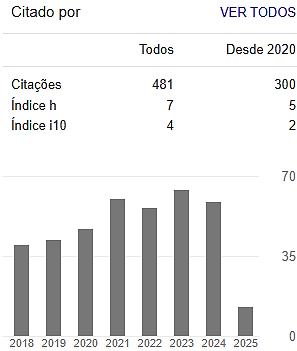CONCENTRAÇÃO DE CAFEÍNA EM Camellia sinensis
Resumo
Considerando que o chá é a segunda bebida mais consumida no mundo é importante não haver excesso de cafeína em sua composição já que ela causa alguns efeitos fisiológicos à saúde humana como o diurético e a dependência química. O presente projeto teve como objetivo comparar os resultados obtidos da determinação de cafeína em chás provenientes da espécie Camellia sinensis com os encontrados na literatura. Para isso, foram utilizadas três amostras de chá branco, três de chá verde e três de chá preto de mesma marca. As análises foram realizadas em triplicatas e a cafeína determinada por espectrofotometria na região do ultravioleta. O chá preto apresentou o maior teor de cafeína (0,106 mg/g), o chá branco 0,082 mg/g e o chá verde o menor (0,067 mg/g). No entanto, os três tipos de chás apresentam baixas concentrações ao serem comparados com a literatura que apresentou valores entre 14,3 e 40,0 mg/g de cafeína de chá.

